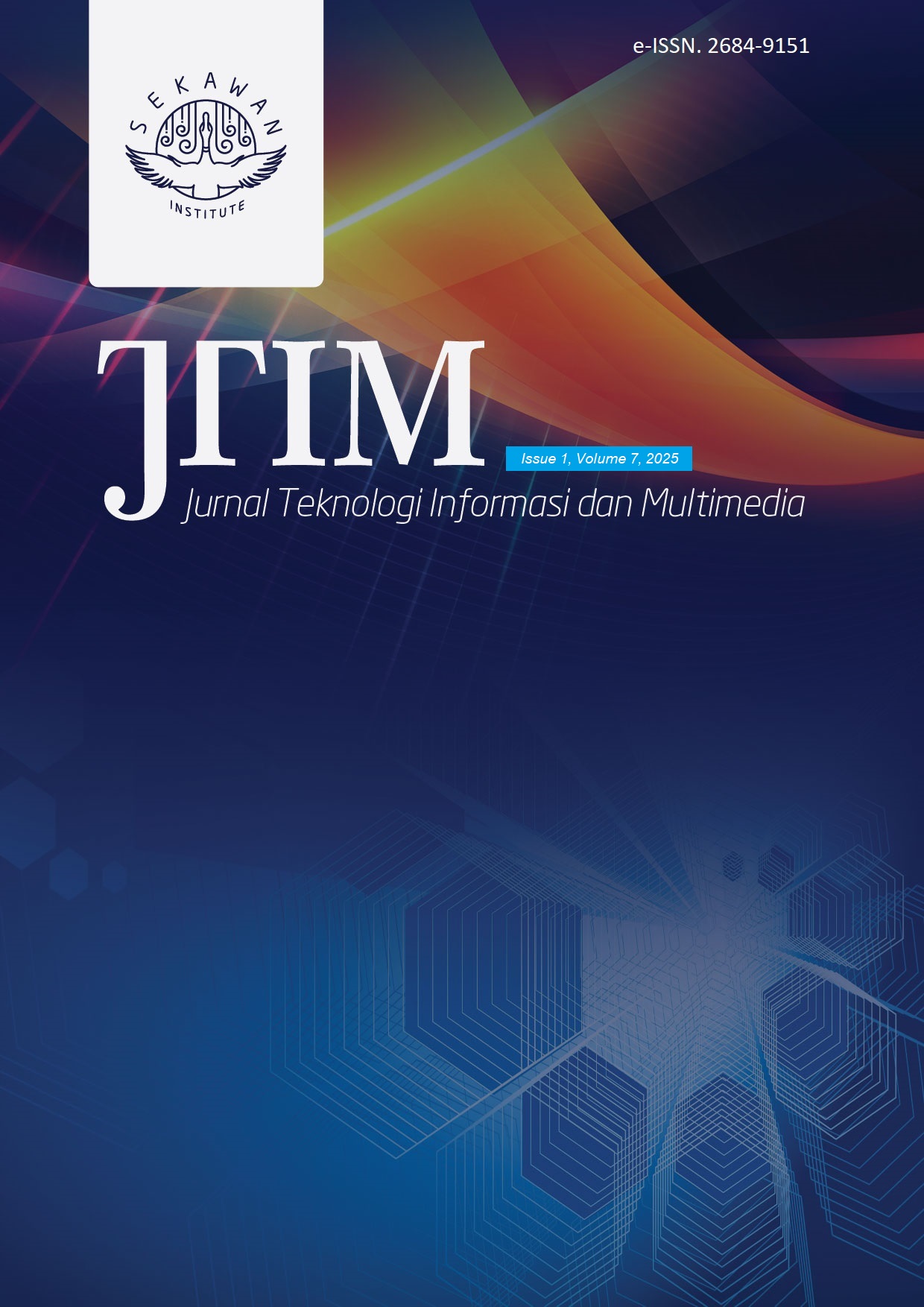Optimalisasi Potensi Wisata NTT dari Perspektif Google Trends dan Big Data Analytics
Abstract
This study aims to identify and analyze tourism trends in East Nusa Tenggara (NTT) using the K-Means clustering method integrated with Google Trends and Big Data Analytics. By utilizing data that includes the number of tourist attractions, hotel accommodations, tourist visits (Domestic and foreign), and restaurant accomodation, the NTT region is categorized into several clusters based on tourism characteristics. The analysis results reveal three main clusters: areas with low tourist attractions and accommodations, areas with very high tourist attractions, and areas with good accommodation facilities but moderate attractions. These findings provide crucial insights for policymakers and tourism industry stakeholders to formulate more effective development strategies, such as infrastructure enhancement in high-potential areas and targeted promotion for niche markets. Additionally, the analysis results indicate significant fluctuations in tourist interest towards NTT, with peak searches occurring in April and September. This research utilizes data from Google Trends and other sources to analyze trends and tourist attractions in NTT tourism, thereby aiding in the development of more effective promotional strategies. Overall, this study contributes to a deeper understanding of tourism dynamics in NTT and the necessary optimization steps to enhance the competitiveness of these destinations. With this data-driven approach, it is hoped that the tourism sector in NTT can develop sustainably and provide economic benefits to local communities.
Downloads
References
E. Purnaningrum and I. Ariqoh2, “Google Trends Analytics Dalam Bidang Pariwisata,” Maj. Ekon., vol. 24, no. 2, pp. 232–243, 2019, doi: https://doi.org/10.36456/majeko.vol24.no2.a2069.
E. Volchek, H. Song, R. Law, and D. Buhalis, “Forecasting London Museum Visitors Using Google Trends Data,” e-Review Tour., 2018, [Online]. Available: https://ertr-ojs-tamu.tdl.org/ertr/article/view/121.
A. B. Oktaviani and E. Yuliani, “Dampak Pengembangan Pariwisata Terhadap Kondisi Ekonomi Masyarakat,” J. Kaji. Ruang, vol. 3, no. 1, pp. 1–17, 2023, doi: http://dx.doi.org/10.30659/jkr.v3i1.22574.
L. Dwyer, “Tourism development and sustainable well-being: a Beyond GDP perspective,” J. Sustain. Tour., vol. 31, no. 10, pp. 2399–2416, Oct. 2023, doi: https://doi.org/10.1080/09669582.2020.1825457.
Kemenparekraf/ Baparekraf RI, “Mengenal 10 Destinasi Prioritas Pariwisata Indonesia,” Kemenparekraf/ Baparekraf RI. [Online]. Available: https://kemenparekraf.go.id/rumah-difabel/Mengenal-10-Destinasi-Prioritas-Pariwisata-Indonesia
K. Tiofani and S. Agmasari, “24 Daftar Destinasi Wisata Terbaik 2024 Versi CNN, Ada Pulau Sumba,” Kompas.com. [Online]. Available: https://travel.kompas.com/read/2024/01/03/114800127/24-daftar-destinasi-wisata-terbaik-2024-versi-cnn-ada-pulau-sumba?page=all
H. Mukhtar, Y. Rizki, F. A. Wenando, and M. Abdul Al Aziz, “Prediksi Kunjungan Wisatawan Ke Indonesia Dengan Reduksi Noise Pada Mesin Pencari Menggunakan Metode Hilbert Huang Transform,” J. Fasilkom, vol. 12, no. 3, pp. 152–159, Dec. 2022, doi: https://doi.org/10.37859/jf.v12i3.4332.
T. Georgieva-Trifonova and O. Mancheva-Ali, “Predicting Tourist Arrivals: A Google Trends-Based Model for Destination Management,” TEM J., pp. 1945–1951, 2024, doi: https://doi.org/10.18421/TEM133-22.
D. Belias, M. Sawsan, I. Rossidis, and M. Christos, “The use of big data in tourism: Current trends and directions for future research,” Acad. J. Interdiscip. Stud., vol. 10, no. 5, pp. 357–364, 2021, doi: https://doi.org/10.36941/ajis-2021-0144.
U. Claude, “Predicting tourism demands by google trends: A hidden markov models based study,” J. Syst. Manag. Sci., vol. 10, no. 1, pp. 106–120, 2020, doi: https://doi.org/10.33168/JSMS.2020.0108.
S. P. Jun, H. S. Yoo, and S. Choi, “Ten years of research change using Google Trends: From the perspective of big data utilizations and applications,” Technol. Forecast. Soc. Change, vol. 130, pp. 69–87, 2018, doi: https://doi.org/10.1016/j.techfore.2017.11.009.
Y. C. Hu and G. Wu, “The impact of Google Trends index and encompassing tests on forecast combinations in tourism,” Tour. Rev., vol. 77, no. 5, pp. 1276–1298, 2022, doi: https://doi.org/10.1108/TR-02-2022-0088.
J. Lyu, A. Khan, S. Bibi, J. H. Chan, and X. Qi, “Big data in action: An overview of big data studies in tourism and hospitality literature,” J. Hosp. Tour. Manag., vol. 51, pp. 346–360, 2022, doi: https://doi.org/10.1016/j.jhtm.2022.03.014.
H. K. Nafah1 and E. Purnaningrum2, “Seminar Nasional Hasil Riset dan Pengabdian Ke-III (SNHRP-III 2021) PENGGUNAAN BIG DATA MELALUI ANALISIS GOOGLE TRENDS UNTUK MENGETAHUI PERSPEKTIF PARIWISATA INDONESIA DI MATA DUNIA,” Semin. Nas. Has. Ris. dan Pengabdi. Ke-III (SNHRP-III 2021) E-ISSN 2776-5105, vol. 3, no. (2021), pp. 430–436, 2021, [Online]. Available: https://snhrp.unipasby.ac.id/prosiding/index.php/snhrp/article/view/225
E. M. S. Rochman and A. Rachmad, “Clustering Tourist Destinations Based on Number of Visitors Using the K-Mean Method,” in Proceedings of the 1st International Multidisciplinary Conference on Education, Technology, and Engineering (IMCETE 2019), Paris, France: Atlantis Press, 2020. doi: https://doi.org/10.2991/assehr.k.200303.075.
A. Jauhari, D. R. Anamisa, and F. A. Mufarroha, “Analysis of Clusters Number Effect Based on K-Means Method for Tourist Attractions Segmentation,” J. Phys. Conf. Ser., vol. 2406, no. 1, p. 012024, Dec. 2022, doi: https://doi.org/10.1088/1742-6596/2406/1/012024.
Copyright (c) 2025 Ellen Tantrisna, Ryan Peterzon Hadjon

This work is licensed under a Creative Commons Attribution-ShareAlike 4.0 International License.







